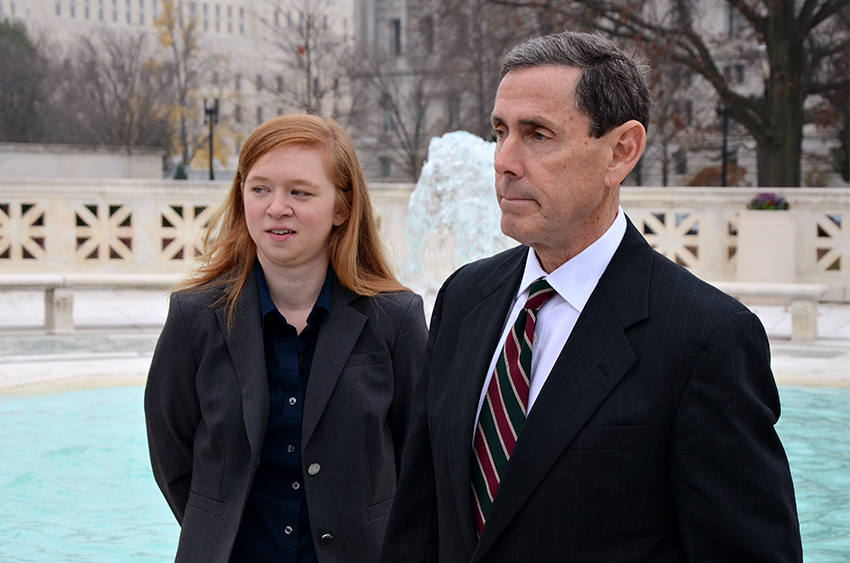In an unexpected move, the U.S. Supreme Court affirmed the University’s use of race-based affirmative action in its current admissions policy last Thursday. While this move may have been bad for most fantasy supreme court leagues (yes, those are a thing), it is decidedly a good one for the near-future of college admissions for underrepresented students. Allowing the University of Texas to correct for the glaring deficiencies of the state’s education system is integral to ensuring every student has a chance to succeed.
Those interested in that mission cannot see this narrow ruling as a total victory. The future of race-based affirmative actions is by no means settled. While the U.S. Supreme Court affirmed UT’s current policy, there is no guarantee future policies will receive the same verdict. Now is the time to craft the future of admission in a way that protects affirmative action while preparing for a day when it may no longer be an option.
The policy that they considered splits the application process in two. Those who graduate in the top seven to eight percent of their high school class are guaranteed automatic admission through House Bill 588, better known as the top 10 percent rule. State law caps the percentage of a class admitted under this provision at 75 percent. The other 25 percent are admitted through a holistic review process that takes into account a variety of factors, among them is race.
Fisher was only eligible for a spot in that second group, and the U.S. Supreme Court was never able to consider whether the top 10 percent rule itself was good for diversity. When comparing the University’s enrollment to the general population of the state, it seems clear that a bevy of changes can be made to ensure that every student is given the opportunity to get into, afford and graduate from a university of this caliber.
The importance of diversity in the University’s student body cannot be overstated. There is no better way to ensure rigorous intellectual discussion than by the inclusion of students with diverse experiences and perspectives, not only the presence of students of different races and ethnicities, but also from the inclusion of people of different socioeconomic backgrounds, nationalities, talents and beliefs. Further, adjusting for the additional barriers that students of color and of low socioeconomic standing face improves the chances that the students with the highest potential are those who actually attend.
But in order to be a university that best serves the people of Texas, rather than one that allows itself to become an enclave of privilege, UT must attempt to closer reflect the demographics of a state which includes significant low income and minority and populations. As it stands, 45 percent of UT students are white despite making up 30 percent of Texas students, and 17 percent of UT students are Asian despite making up four percent of Texas students. On the other hand, Hispanic and black students are underrepresented at UT, making up 20 percent and four percent of the student body despite making up 52 percent and 13 percent of Texas students respectively.
On some level, this vast divide in racial representation reflects the failure of Texas to effectively tap the potential of its minority students. While the Texas Supreme Court did rule that the state’s public education system is constitutionally adequate, that system gives less money and resources to economically disadvantaged students, who are disproportionately black or Hispanic. As long as the state continues to stack the deck against these 60 percent of students, the University will have to choose between diversity and prestige.
Over the past two decades, the state government decreased university funding per student by 20 percent, prompting Texas public universities to raise their tuition and shifting the burden of paying for college towards students. This makes it harder for universities to garner enough funding, oftentimes putting programs that specifically serve minority and economically disadvantaged students, such as the Texas Interdisciplinary Plan, on the backburner. This further incentivizes them not to apply to the University.
Funding gaps affect admissions in even less obvious ways as well. Many poorer districts have forgone college counselors to keep costs down, increasing the need for colleges to directly recruit the sorts of students capable of adding diverse perspectives to their incoming classes. Texas A&M University has been able to achieve similar levels of minority enrollment to UT through aggressive recruitment strategies centered around the idea that these students are worth having on campus. UT would be wise to adopt similar strategies, especially given its already strong name recognition among these students.
In the long term, the University needs to consider its options outside of its current system. The University of California System has managed to massively increase the number of minority black and Hispanic students without race-based affirmative action by giving greater weight to students who did not speak English at home and were first in their family to attend college. UT should consider adopting at least some elements of their system should another future Supreme Court decision render the current system untenable, or even advance of future rulings.
We recognize that the Texas legislature is unlikely to implement any of these measures in the midst of debating gun rights, regulating women’s bodies and arbitrating who is allowed to use bathrooms. The the U.S. Supreme Court ruling presented a win for UT, an affirmation that status quo practices are acceptable measures of attaining diversity. But the state’s underlying system for educating its minority and low income students is broken and the only people capable of fixing it seem more interested in breaking other things.
While the ball is essentially in the legislature’s court, UT must waste no time in implementing every change they can to improve the situation in the interim. This means diverting more resources to recruit students of color or commissioning its researchers to study how to better treat the problems on their end. No less than guaranteeing the educational future of the state is at risk.
















